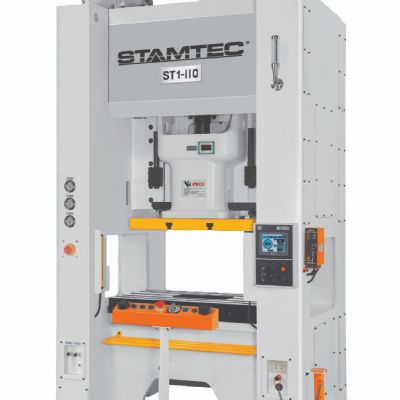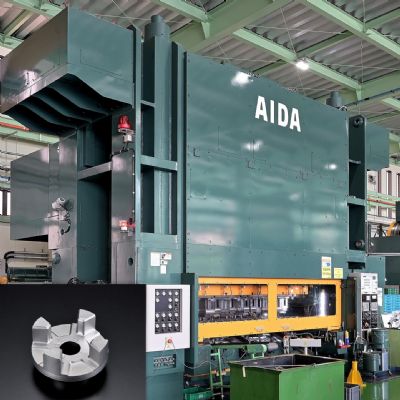Weighing these factors, we present five reasons why a retrofit may be the better choice.
1. Upgrading or switching technology may improve performance beyond expectations.
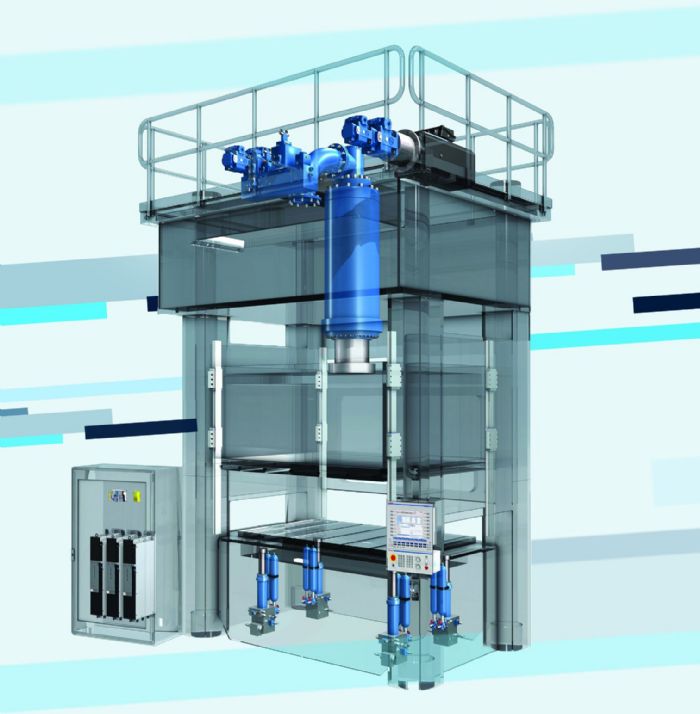 Advancing technology provides a wider range of choices than ever. In certain cases, switching from older technology offers the best option for improved machine performance. For example, upgrading an existing press from traditional hydraulics to servohydraulics, or to a hybrid system, can bring a substantial upgrade in machine capability. Control of speed, force and torque along with other enhancements all result from upgrading to a servo system. Adding a servo motor to a pump to create a hybrid system can yield similar benefits.
Advancing technology provides a wider range of choices than ever. In certain cases, switching from older technology offers the best option for improved machine performance. For example, upgrading an existing press from traditional hydraulics to servohydraulics, or to a hybrid system, can bring a substantial upgrade in machine capability. Control of speed, force and torque along with other enhancements all result from upgrading to a servo system. Adding a servo motor to a pump to create a hybrid system can yield similar benefits.
Upgrades in linear-motion technology also bring significant benefits, especially with older presses.
For example, in a machine with an older plain or solid-type linear bearing, swapping the plain bearing with a modern rolling-element linear bearing greatly improves energy efficiency. A plain bearing generates surface-to-surface contact, increasing friction and, thus, the energy required to power it. Modern ball and roller bearings greatly minimize friction effects, and offer a nearly limitless variety of options in precision, sealing capability, size and shape. It’s easy to find the right level of bearing-performance upgrade to suit a manufacturer’s needs. Retrofitting the older components provides cost-saving benefits to the machine, extending its life significantly and improving overall production.
For smaller presses, a technology switch from hydraulics to electromechanical technology may bring additional benefits, such as noise reduction and improved factory-floor cleanliness. The switch means no more hydraulic fluid to deal with, and today’s electromechanical drives provide high force and precision movement with extremely quiet operation. For example, depending on force requirements, Rexroth’s ball and planetary screws may be used, and will reduce plant noise. Electromechanical technology has a limited force-application range, however, maxing out at around 30 tons. Dynamic loads during operation and the required press duty cycle might reduce this even further. So, while electromechanical retrofits as a replacement for hydraulics prove possible in a range of applications, the power density of hydraulic drives means that most hydraulically powered presses will stay in the hydraulics family.
But even in high-tonnage applications, users still have noise-reduction options. Variable-speed hydraulic pump drives, such as Rexroth’s Sytronix pump, can achieve noise reductions of as much as 20 dB. Implementing these drives in multiple machines within a single factory offers considerable improvement in operator comfort and, consequently, productivity.
2. Retrofitting improves worker and machine safety.
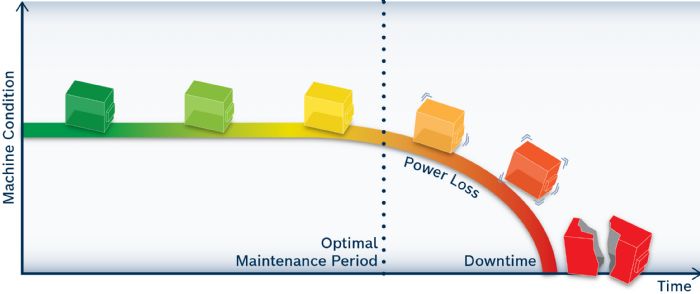 With the advancement of safety technology and additions to government safety requirements, older machinery in its original state may not comply with all of today’s regulations, and requires upgrades to fit current safety standards. In simple terms, an aging press can cause environmental and operational hazards such as oil leaks, loose wiring or failing components. Though it’s often relatively simple to fix these types of problems, safety technology has progressed so significantly that taking such a reactive-only approach results in missed potential for healthy productivity upgrades.
With the advancement of safety technology and additions to government safety requirements, older machinery in its original state may not comply with all of today’s regulations, and requires upgrades to fit current safety standards. In simple terms, an aging press can cause environmental and operational hazards such as oil leaks, loose wiring or failing components. Though it’s often relatively simple to fix these types of problems, safety technology has progressed so significantly that taking such a reactive-only approach results in missed potential for healthy productivity upgrades.
For example, until recently, the definition of “E-Stop” meant immediately cutting power to a machine. This proven and necessary feature not only prevents injury to the machine operator, but also protects the machine by stopping moving parts from crashing and causing further damage. After repairs, operators turn the machine back on and, after a lengthy startup, it resumes operation. Safety features today are much more advanced.
For example, today’s safety technology, such as Rexroth’s Safety on Board, eliminates a lengthy startup by taking a much more sophisticated approach to locking out specific aspects of the machine. Instead of cutting power entirely, Safety on Board allows users to stop operation of moving parts, enabling safe press repair while still under power. Once repair personnel safely exit the machine, operation can resume without a lengthy startup routine. The time savings here may improve productivity substantially and increase the machine’s stroke rate, resulting in increased overall equipment effectiveness (OEE).
In addition to control electronics, press-component safety features also continue to improve. Press safety blocks, for example, can be implemented into the hydraulic circuit of existing machines for added safety. Used mostly in down-acting machines such as stamping lines, cold-forming machines and peripheral equipment, retrofit-friendly safety blocks add a good measure of protection.
However, safety always should be viewed holistically when evaluating upgrades. If not integrated into the machine control, even simple upgrades such as safety blocks will be ineffective. Constantly advancing, controls, safety blocks, and safety programmable logic controller or I/O technology each bring new safety capabilities to the manufacturing sector. Implementing all safety features and components, if not connecting them to a machine safety infrastructure, provides little value to production.
3. Retrofitting reduces downtime and lowers overall operating costs.
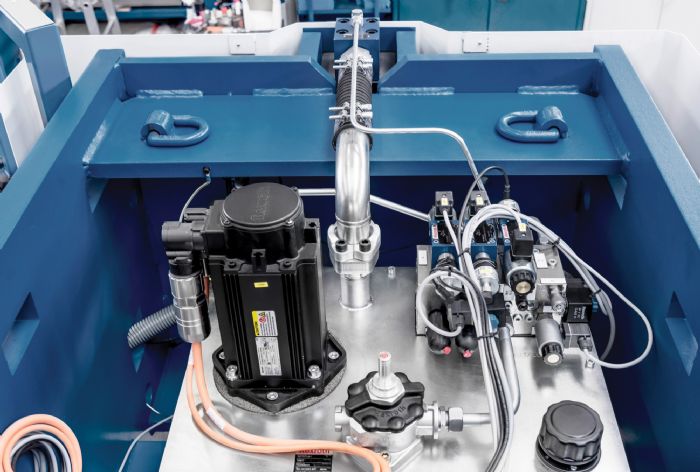 Improved OEE results not only from increasing performance or reducing cycle time, but also by decreasing the frequency and severity of maintenance. A key factor in production efficiency: minimizing unnecessary downtime, which increases overall usage.
Improved OEE results not only from increasing performance or reducing cycle time, but also by decreasing the frequency and severity of maintenance. A key factor in production efficiency: minimizing unnecessary downtime, which increases overall usage.
With this in mind, implement analytics to understand press performance. Analytics options abound. For example, a Rexroth digital service, Online Diagnostic Network (ODiN), provides predictive maintenance on large industrial equipment. Utilizing machine learning, ODiN predicts failure and recommends maintenance actions with the help of Rexroth service support.
Increased transparency of a system’s status provides more assurance of a machine’s proper maintenance and continued operation. However, in retrofit situations, analytics cannot immediately solve all issues. Component wear from years of operation, such as leaky hoses or worn bearings, increases downtime, maintenance frequency and energy usage, and negatively affects operating costs and OEE. While replacing worn parts represents a critical first step, incorporating new technology can reduce component wear going forward.
One example: modern variable-speed pump-drive technology, such as the Sytronix pump drives mentioned above. These pumps provide power at the required levels only when needed during press operation, significantly reducing the required rotational speed and the total pump-drive travel. This not only offers energy savings of 30 to 80 percent during typical operation, but also reduces heat generation and component wear. Even in applications with less-significant energy savings, retrofitting presses with such technology still significantly lowers operating costs through a combination of increased energy efficiency and component longevity.
4. Retrofitting improves process visibility and quickens reaction to production deviations.
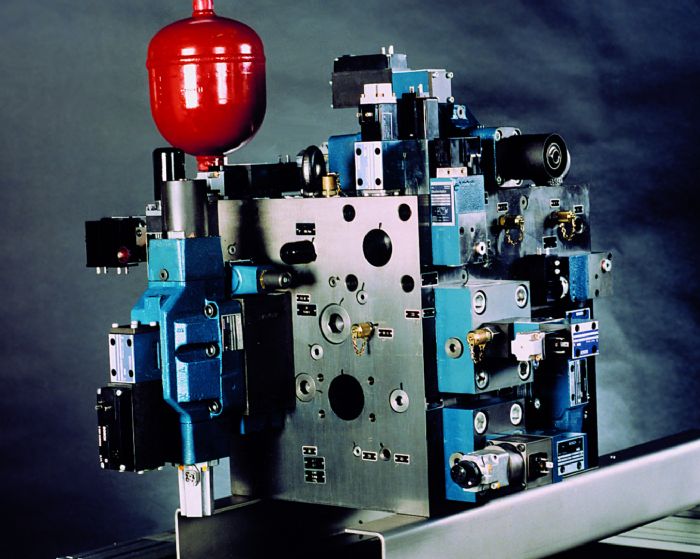 What about Industry 4.0 and Industrial Internet of Things capabilities? Can manufacturers retrofit older machines to collect previously unavailable real-time data? Yes!
What about Industry 4.0 and Industrial Internet of Things capabilities? Can manufacturers retrofit older machines to collect previously unavailable real-time data? Yes!
Electromechanical and electrohydraulic technologies now offer self-diagnostic and connectivity capabilities that help manufacturers benefit from the latest industrial revolution. Other new products bring connectivity to older machines. For example, Rexroth’s IoT Gateway expands on technology initially demonstrated on a lathe used by Robert Bosch in the 1880s. By adding sensors to key functional components and connecting back to simple hardware with a web-based interface, manufacturers can gain real value from previously unobtainable data.
Obtaining such data may lead to solutions to formerly undiagnosed problems. Collecting OEE data and monitoring machine performance may lead a manager to believe that a press performs just fine. Instead, it lies waiting for parts that failed to arrive on time. Real-time data provide instant visibility into equipment problems or deviations. Manufacturers can know what is happening within their plants at any time, from anywhere. Sensors calibrated to monitor machine part wear or temperature keep operators and managers informed on individual press operations or other key production processes. In systems with Rexroth’s linear guides, for example, adding the new Integrated Measuring System as a linear encoder offers a relatively simple retrofit that provides position-sensing data.
Today’s connected world offers virtually limitless possibilities to retrieve, and act on, data. In fact, in a wise implementation, integrated sensors even can predict production issues before they occur and alert machine operators to act before production falters. Consider torque monitoring as a relatively simple example. In a press, when a screw drive begins to wear, the motor torque required to turn the screw increases. If the servo drive detects this increased torque, it can send an automatic notification allowing plant-operations personnel to address the issue prior to complete component failure. This reduces the chances of downtime caused by unplanned repairs. Industry 4.0 truly provides potential for improved OEE.
5. Executing a retrofit helps in considering technology and capability upgrades in other systems and machines.
With automation and technology innovations developing so quickly, staying abreast of new capabilities that might provide a competitive edge proves difficult. Implementing a retrofit provides an inside look and hands-on experience with the latest technologies. Even simply consulting with knowledgeable experts about what might be possible can yield unexpected insights.
When deciding on a retrofit, manufacturing engineers and machine operators must determine the critical factors that allow their unique operations to stay financially and industrially competitive―and still deliver quality product. A press retrofit may even reveal other cost-effective operations upgrades, particularly for manufacturers that consider OEE across the entire production system. Even a small start in retrofitting a single machine brings knowledge, including knowledge provided by qualified retrofit partners, that helps in effectively assessing other equipment. MF
View Glossary of Metalforming Terms
See also: Bosch Rexroth Corp.
Technologies: Stamping Presses






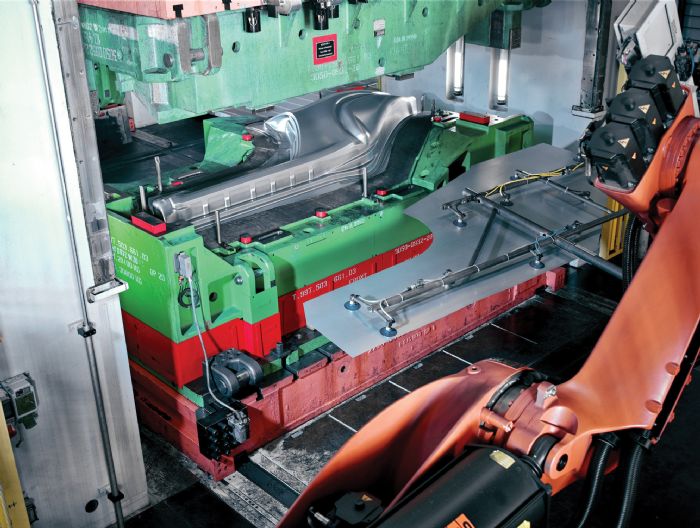 Perhaps more importantly, as technology advances, a 1950s-era press no longer may be capable of making parts with 21st-century requirements. Modern automotive parts offer an excellent example: Sheet metal used in today’s cars and trucks differs significantly from that used several decades ago, and the material roster now includes aluminum. These materials bring unique requirements for processing and forming. Presses of an older era simply cannot accommodate these requirements, which may necessitate the use of active or passive die cushions, and state-of-the-art press controls.
Perhaps more importantly, as technology advances, a 1950s-era press no longer may be capable of making parts with 21st-century requirements. Modern automotive parts offer an excellent example: Sheet metal used in today’s cars and trucks differs significantly from that used several decades ago, and the material roster now includes aluminum. These materials bring unique requirements for processing and forming. Presses of an older era simply cannot accommodate these requirements, which may necessitate the use of active or passive die cushions, and state-of-the-art press controls. 